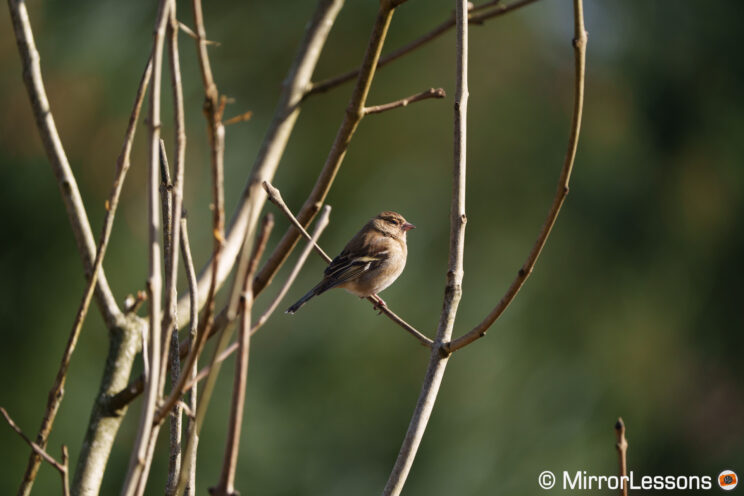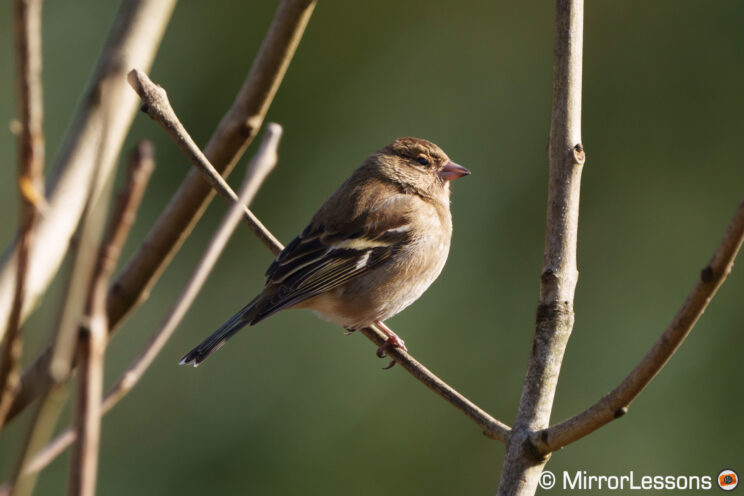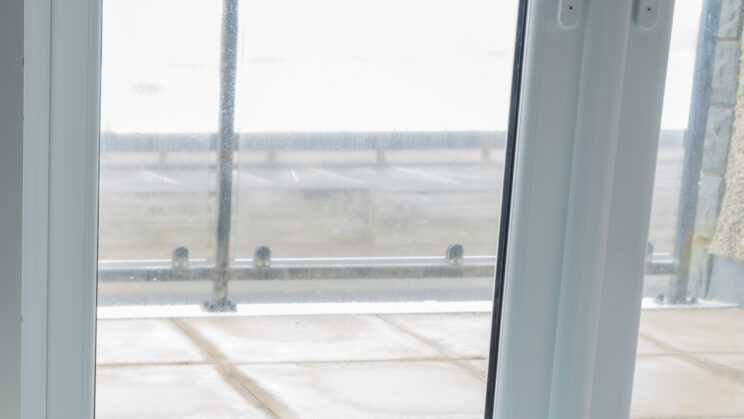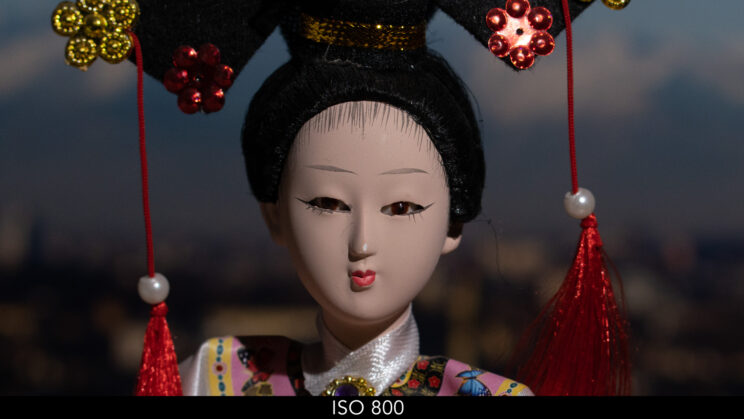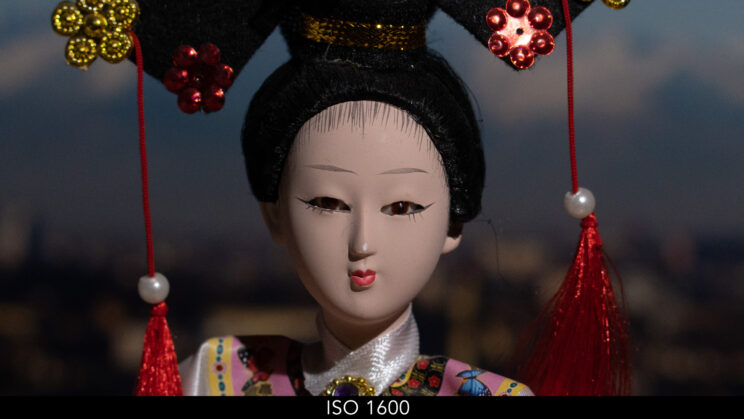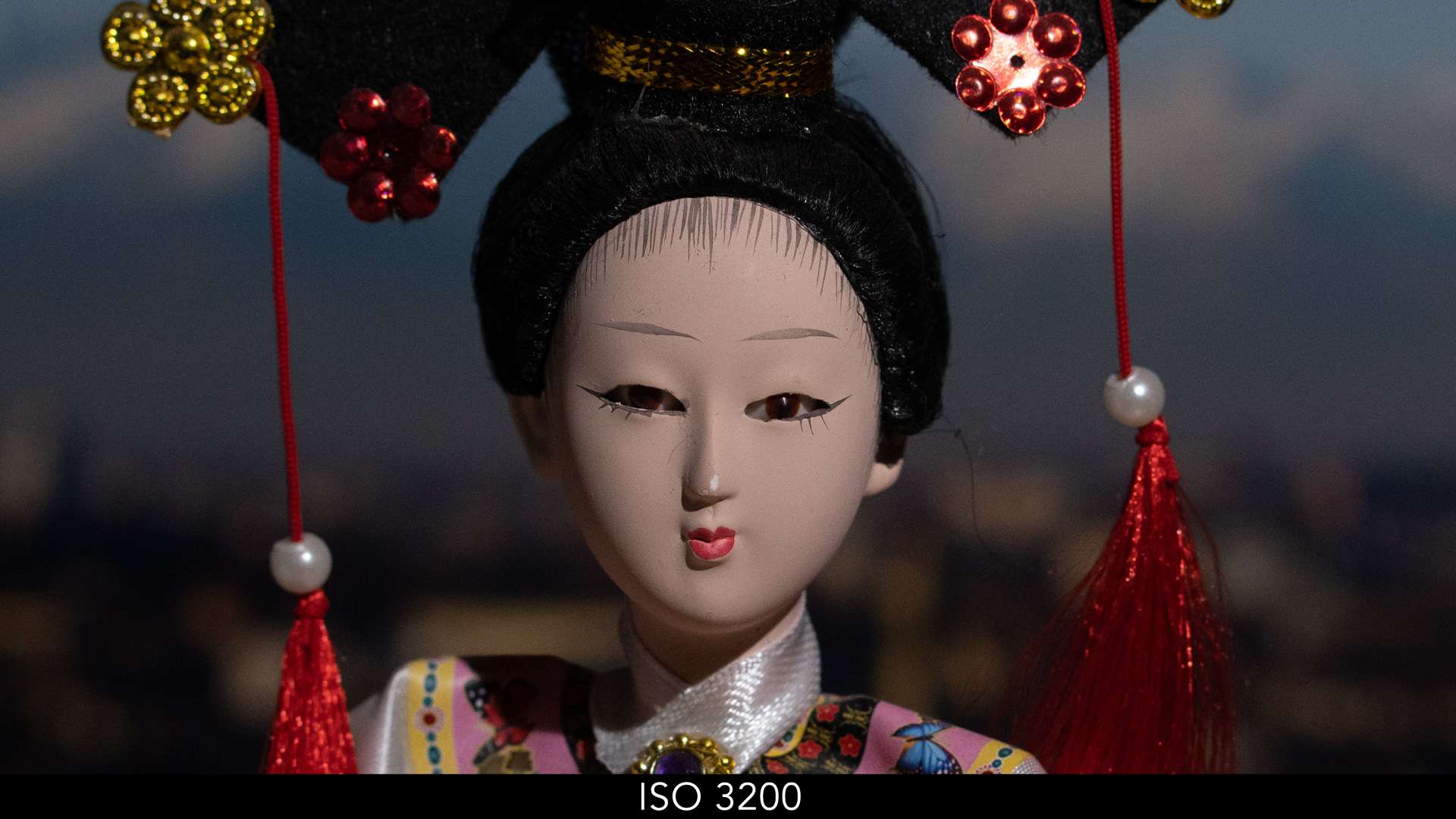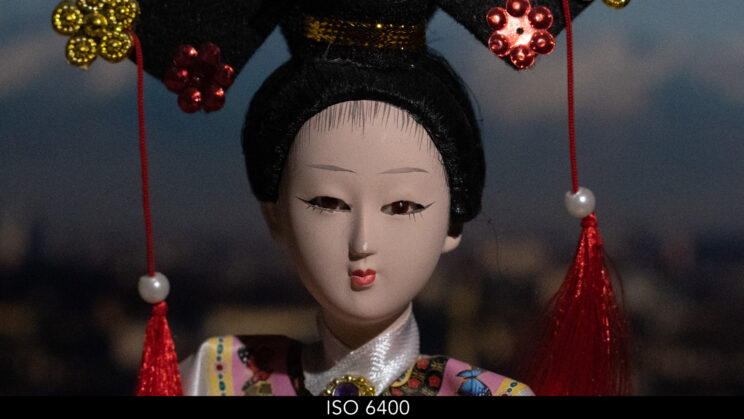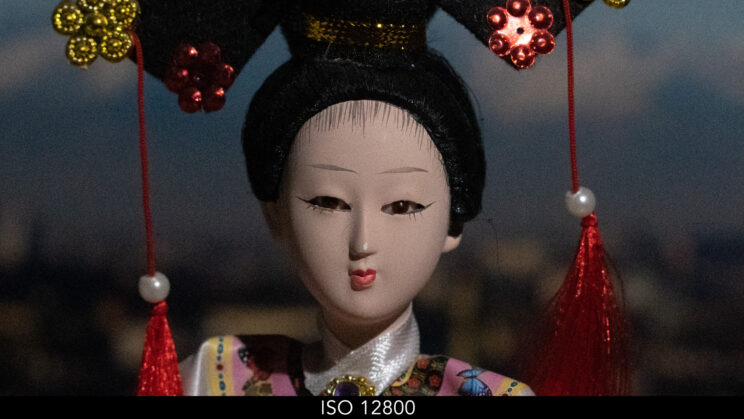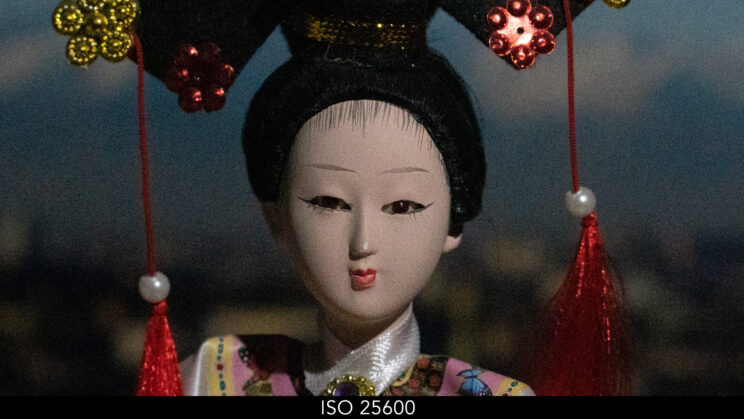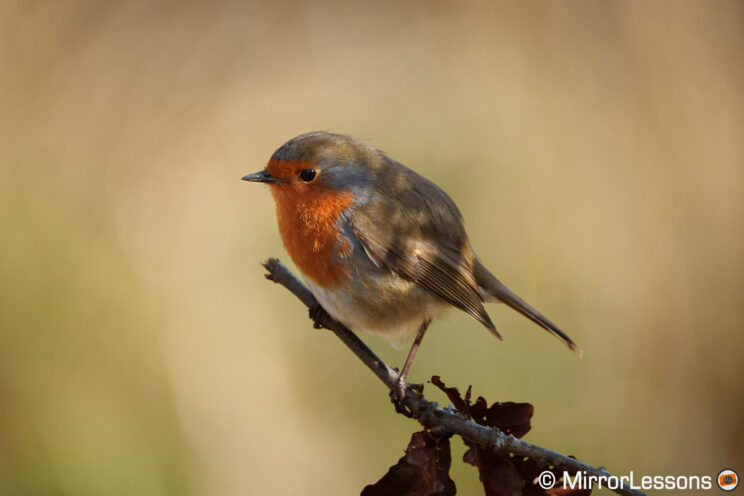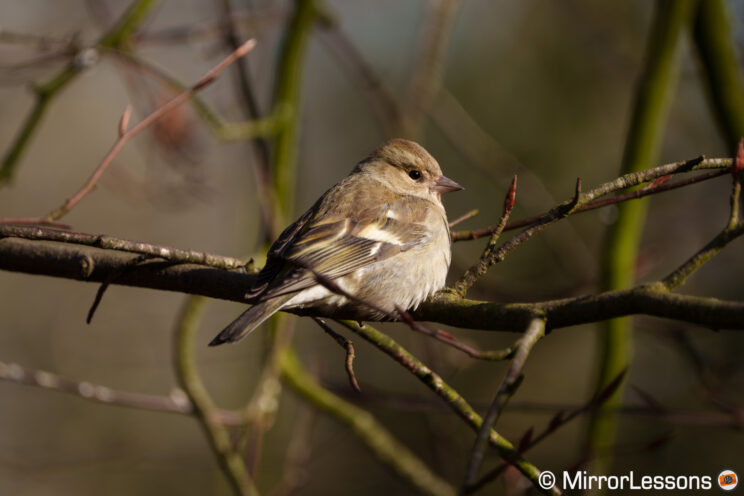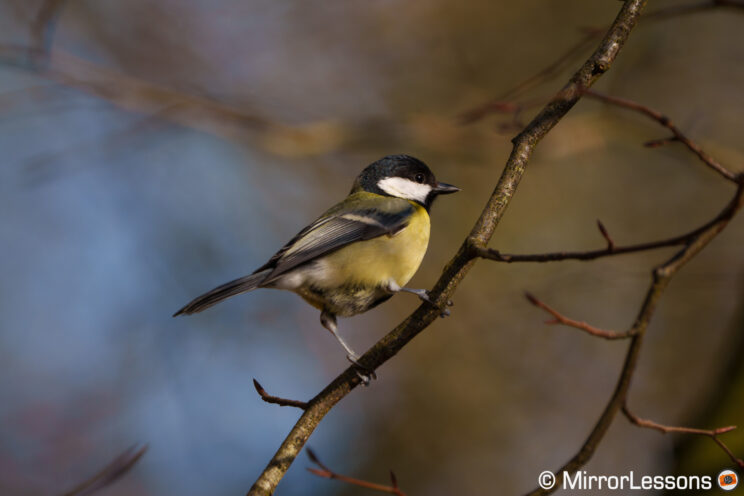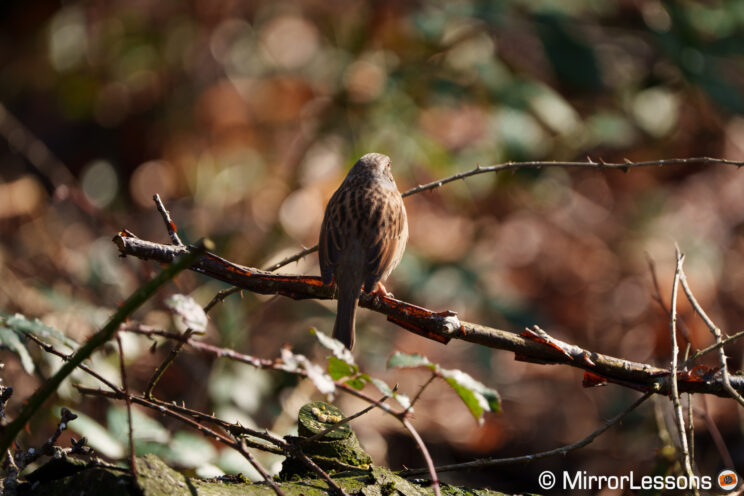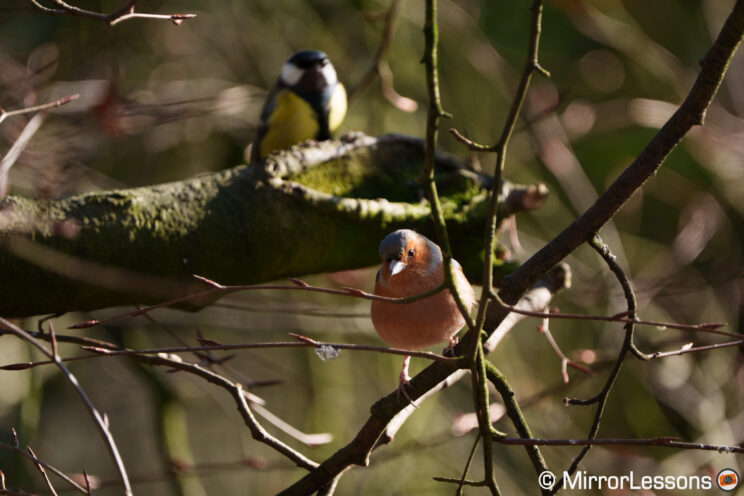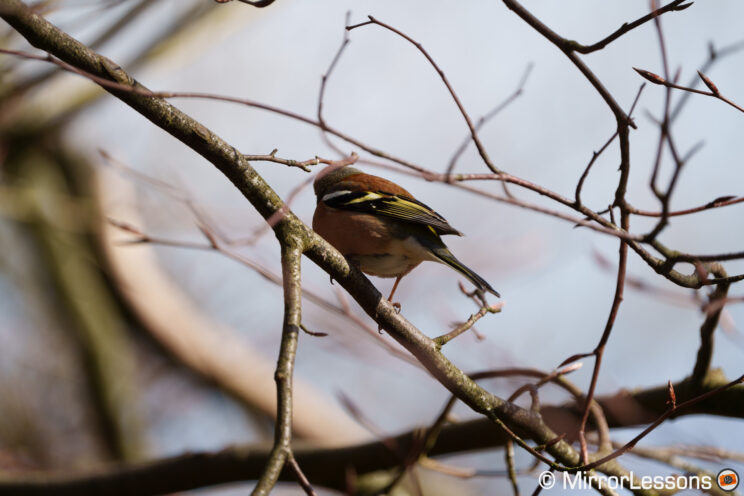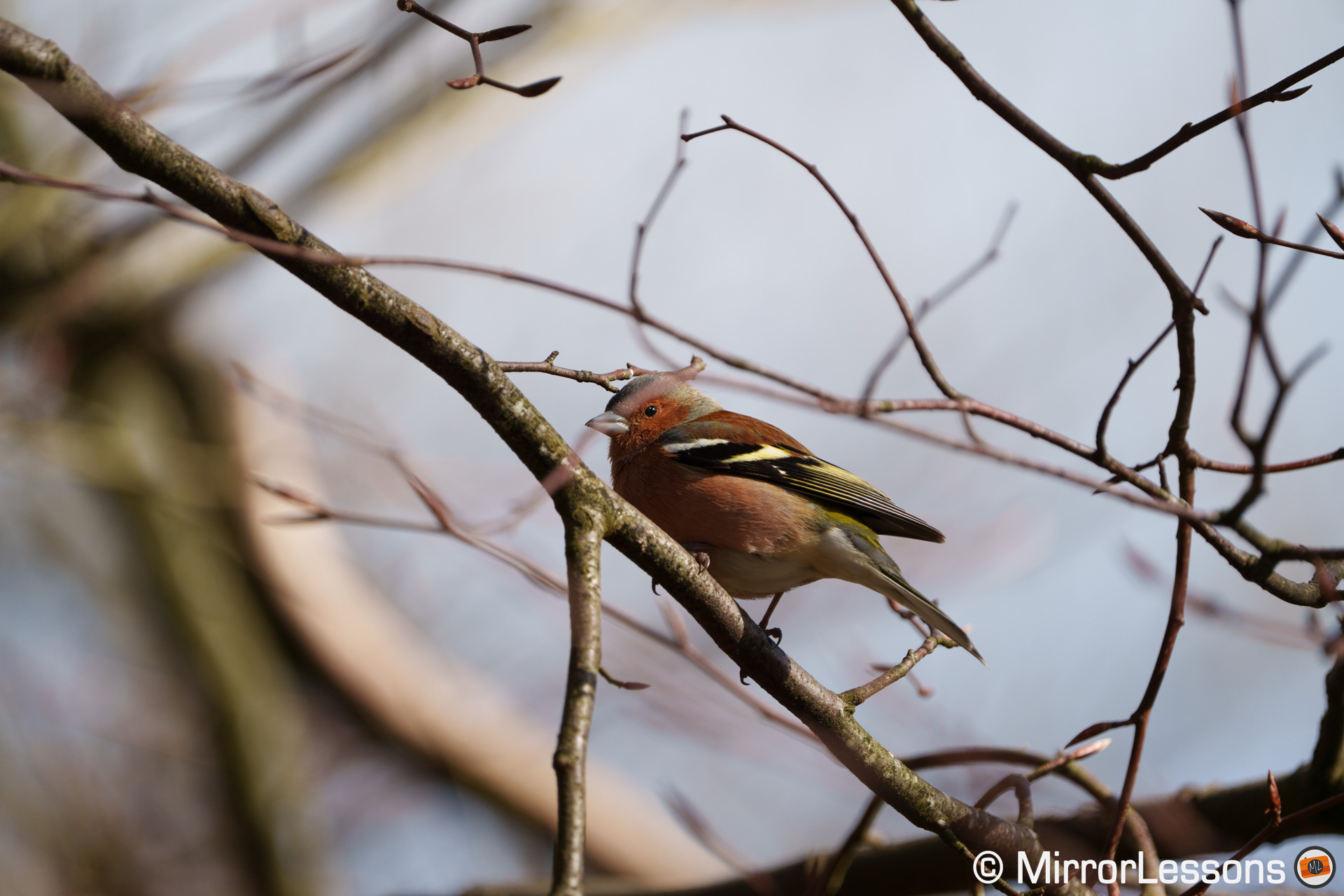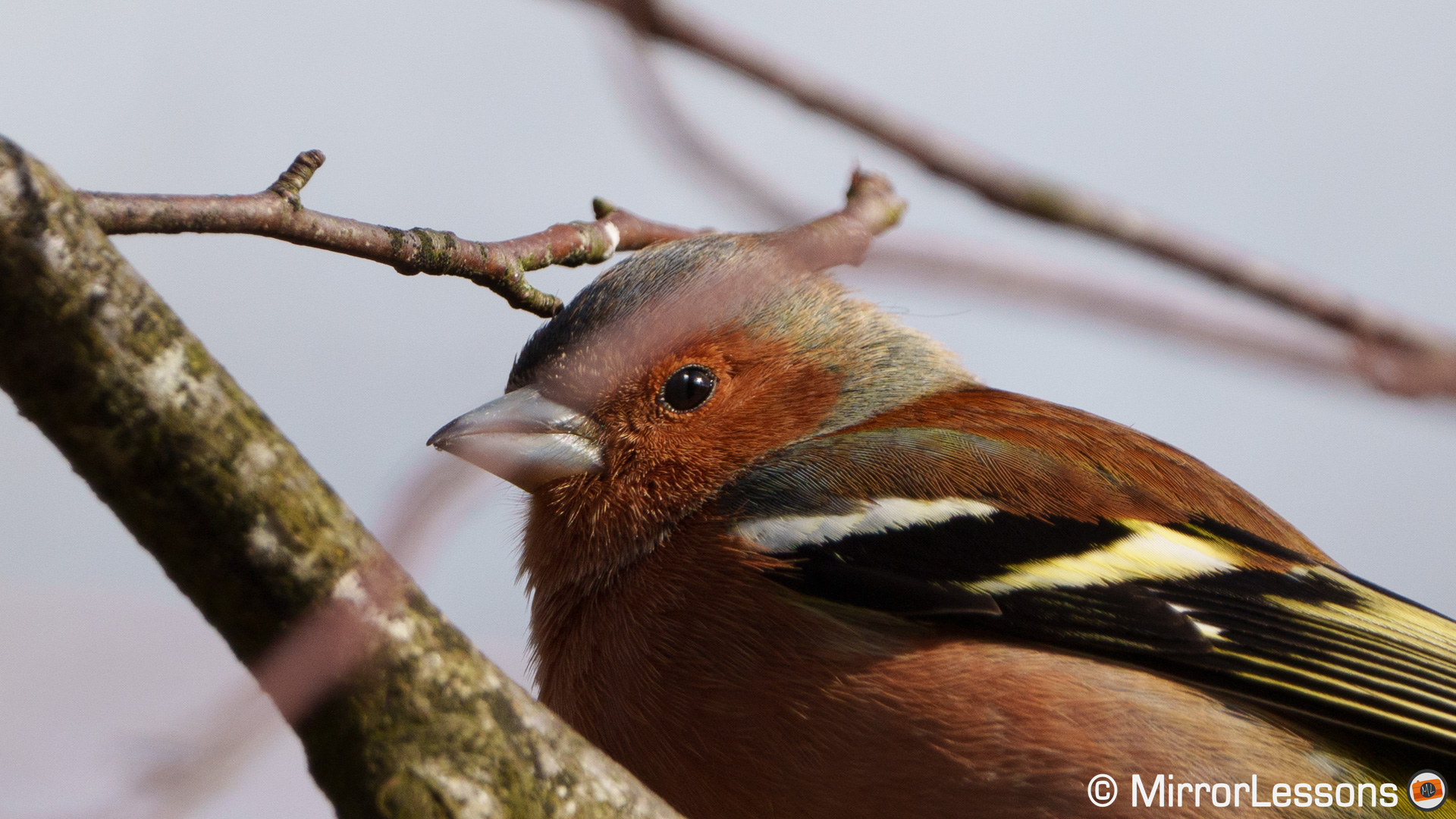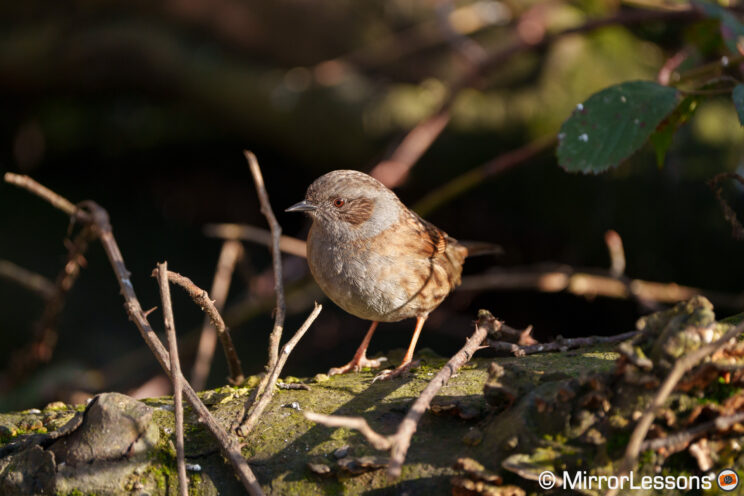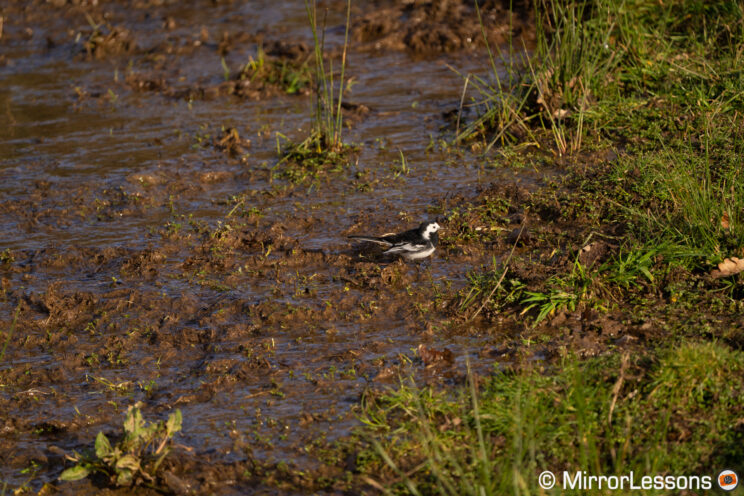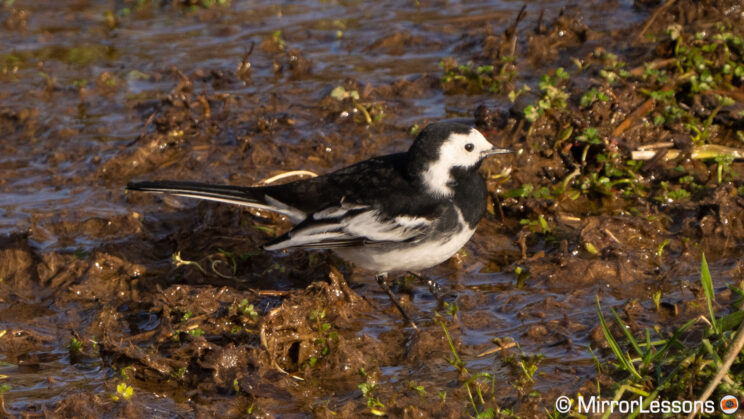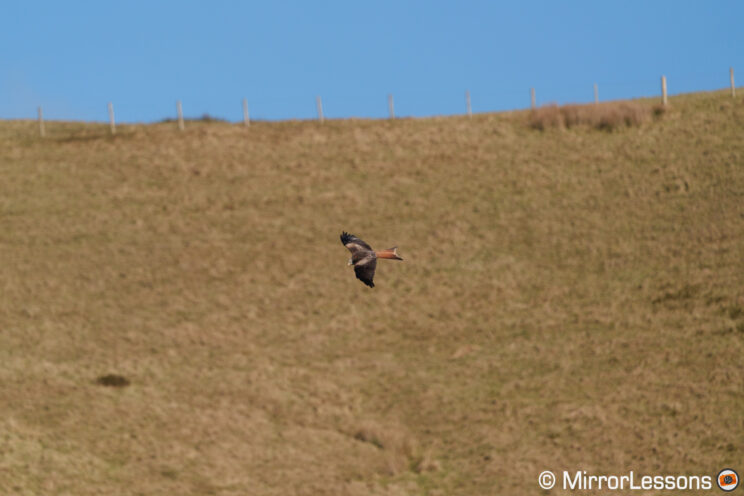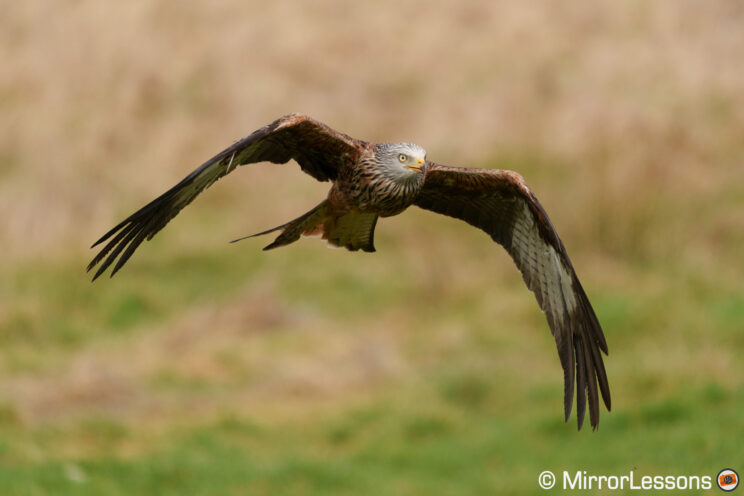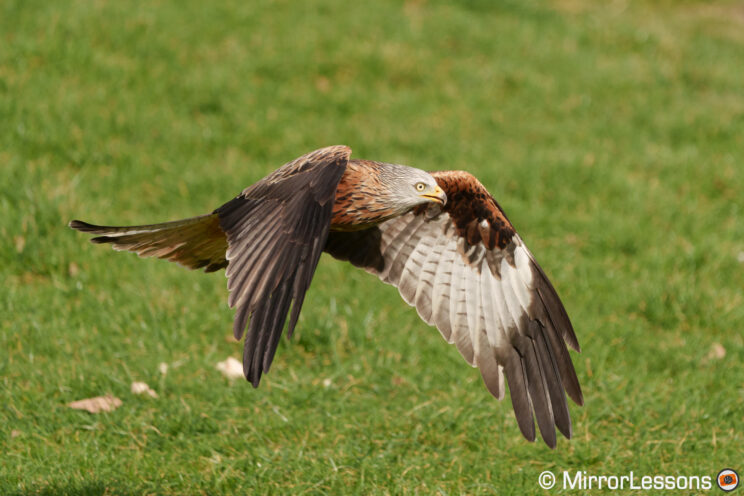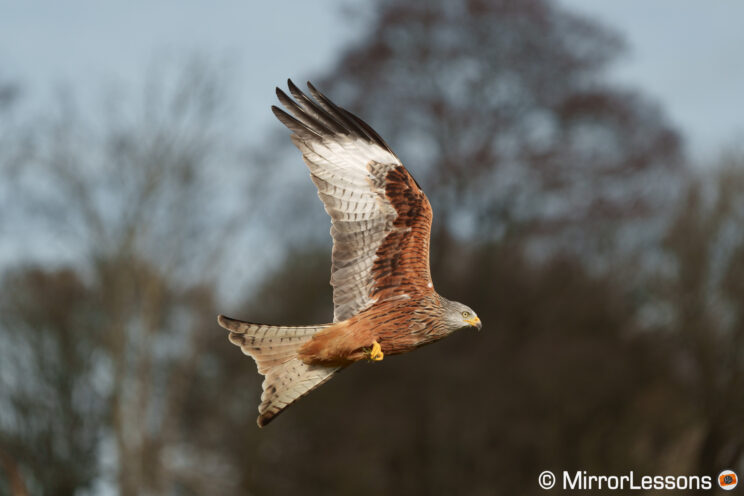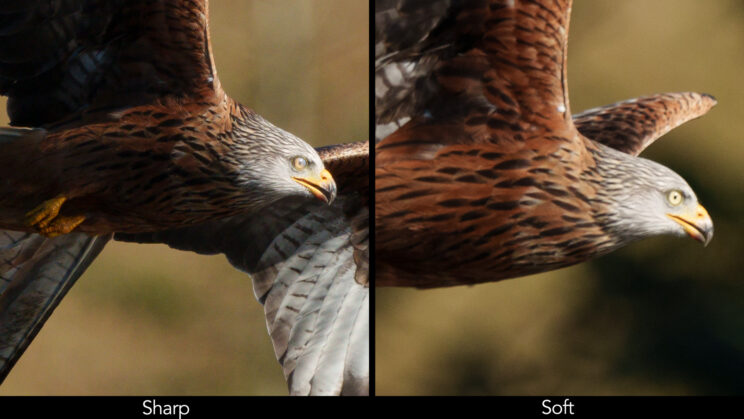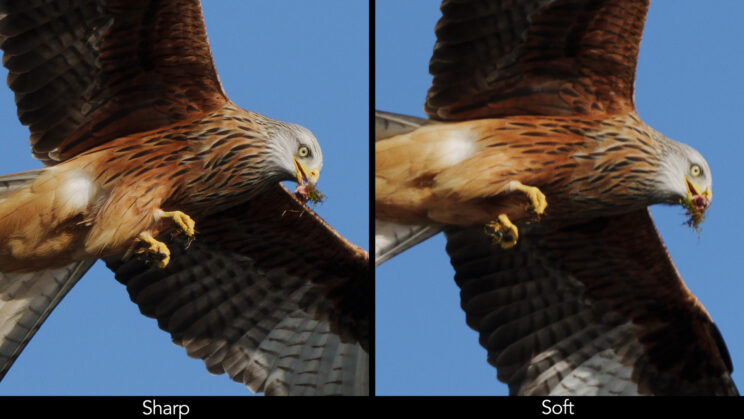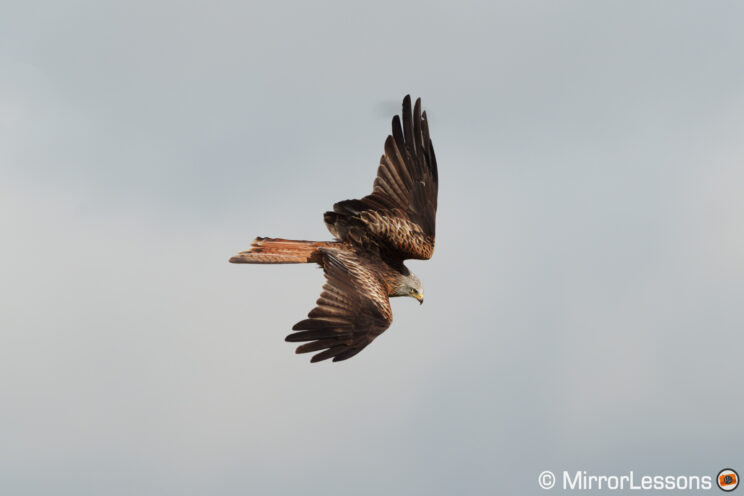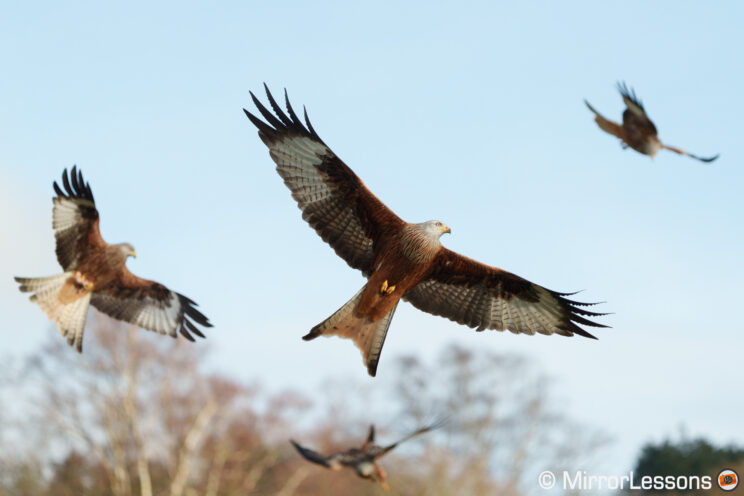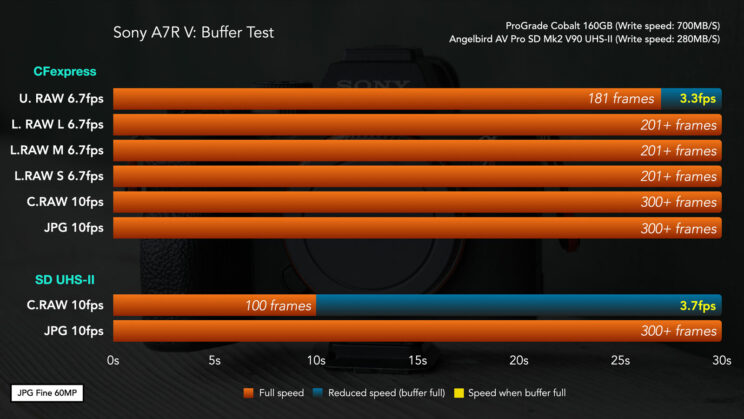The A7R V introduces the next generation autofocus system from Sony, a system that relies on deep learning technology (or AI, as they like to call it) more than ever before. It’s more advanced, more intelligent, and includes more settings to configure.
I wanted to test this camera to find out if, indeed, it has the best autofocus out of all the E-mount full frame models so far, and what this tells us about future products. As it happens often on my website, this review focuses on bird photography.
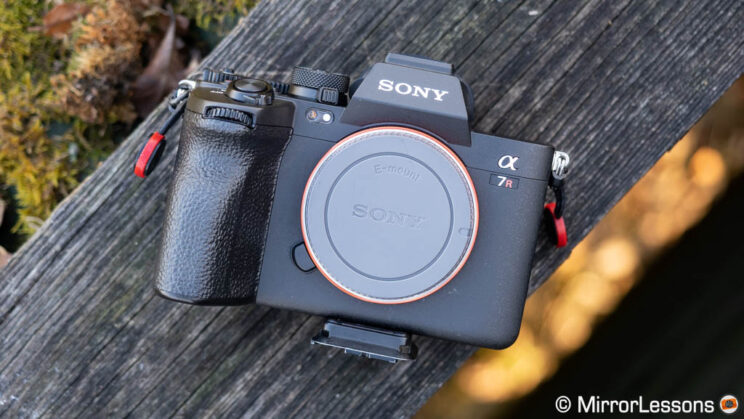
Ethics statement: I rented the Sony A7R V to produce this article. We were not asked to write anything about this product, nor were we provided any compensation of any kind. Within the article, there are affiliate links. If you buy something after clicking one of these links, we will receive a small commission. To know more about our ethics, you can visit our full disclosure page. Thank you!
TABLE OF CONTENTS
Design
Image Quality
Autofocus
Subject Detection Settings
Birds in Flight
Drive Speed
Conclusion
Design and Ease Of Use
I’m not going to spend too much time on this chapter, because the A7R V shares the same design as the latest A7 cameras, like the A7 IV.
It’s a weather sealed and compact body with a lot of physical controls, and a lot of customisation, not only in terms of the buttons, but also the Fn menu and My menu sections. You get the latest design tweaks like the photo/video lever under the main shooting mode dial.

The A7R V has a decent front grip although, as I said many times, I find it a bit small when using large lenses, unless of course you add a battery grip, or a grip extender.
The viewfinder is one of the absolute best you can find, with a superb 0.64-in OLED panel with 9.44M dots of resolution, a large 0.9x magnification, a long 25mm eyepoint, and a fast frame rate (max. 120Hz). I find it comfortable to use with prescription glasses.
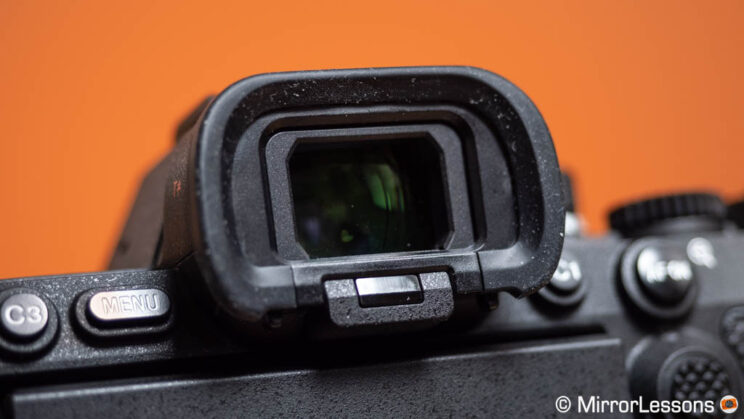
The most noticeable design upgrade on the A7R V is the rear LCD. At first, it looks like your standard vari-angle monitor that you can flip on the side and rotate 180˚. Play with it a few more seconds, and you realise you can also tilt it up and down. This is a clever solution that should please users who like the classic multi-angle mechanism, but also those who prefer the 2 axis up-and-down movement. It doesn’t add too much thickness, and it feels very robust.
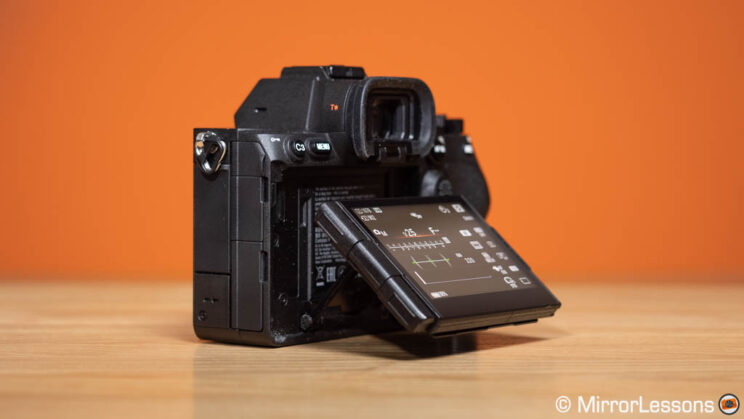
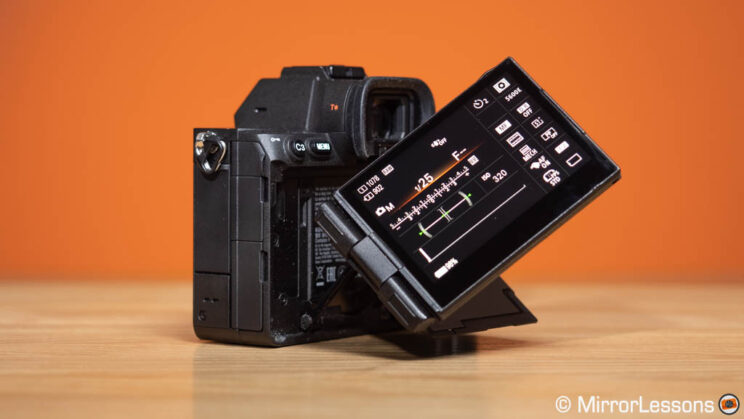
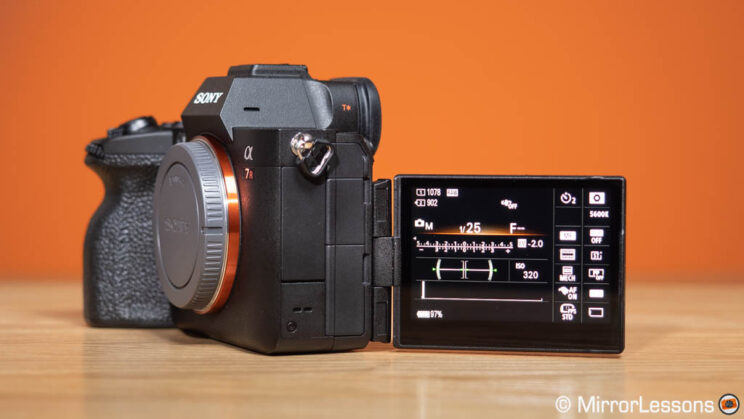
There are two memory card slots, and they are hybrid: you can insert two SD UHS-II cards, or two CFexpress Type A cards. CFexpress cards are more expensive but, as we’ll see further down, they are faster and help with the buffer, among other things.
The battery is the same as other Sony cameras, the NP-FZ100, but I found battery life to be inferior on the R5 model. For example, after a 2 hour session at the red kites feeding station, with around 1,500 images and a few 4K 50p video clips, there was 28% of battery life left. With an A7 IV, in the same shooting conditions, I would have had at least 40 or 45% of battery juice left.
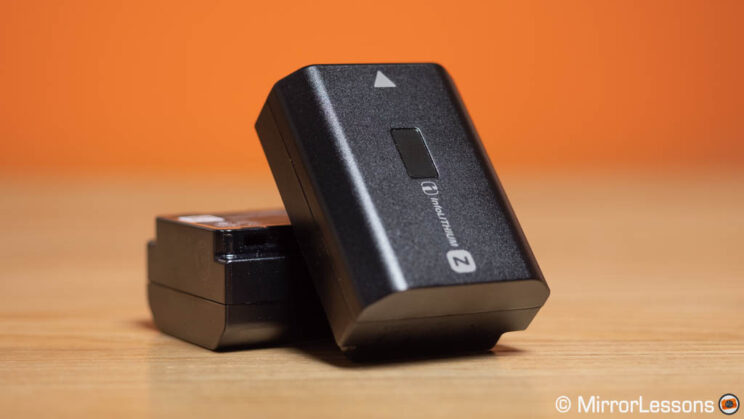
Finally, a quick look at the physical connectors. You get a:
- Full sized HDMI
- Flash sync socket
- Microphone input
- Headphone output
- 10Gbps USB C
- and a smaller and older micro USB port.
The USB C port can be used for power delivery.
Image Quality
Inside the A7R V, we have the same 61 megapixel full frame sensor as its predecessor, the A7R IV, and it’s a great sensor, with plenty of resolution and no low-pass filter, so you can capture very sharp and crips details.
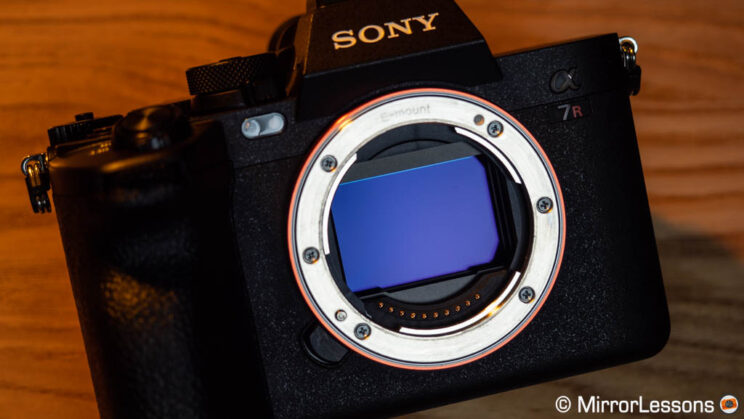
Such high resolution is great for wildlife because it gives you more versatility to magnify your subject, at times when long focal lengths and teleconverters are not enough. You have more room for cropping in post without being left with a few MP only and if you decide to use the APS-C mode, you will save 26MP images, which is more than adequate.
Dynamic range is very good, as you can imagine. Below is a quick example with a strong four-stop exposure recovery in Lightroom, just to see what happens when you push the RAW files a bit too far. There are plenty of details left, and not too much noise.
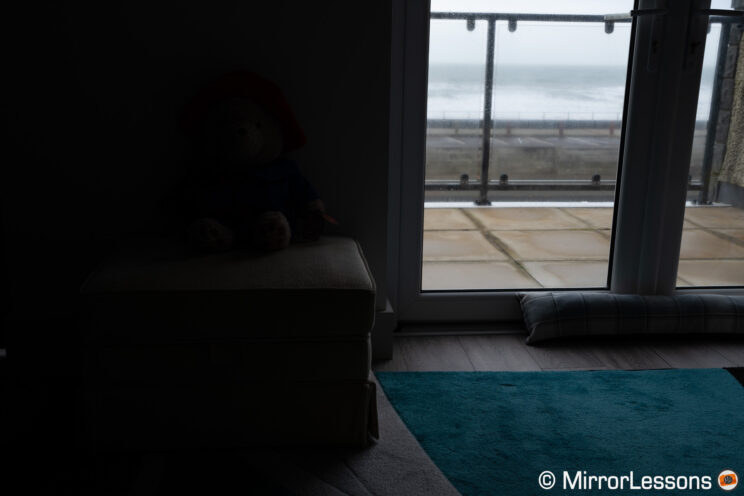
Then we have highlight recovery, which is very good and on par with other fine sensors from Sony, like for example the 33MP version found in the A7 IV.

Let’s have a look at the ISO performance now. The range goes from ISO 100 to 32,000. The extended values go from ISO 50 to 102,400.
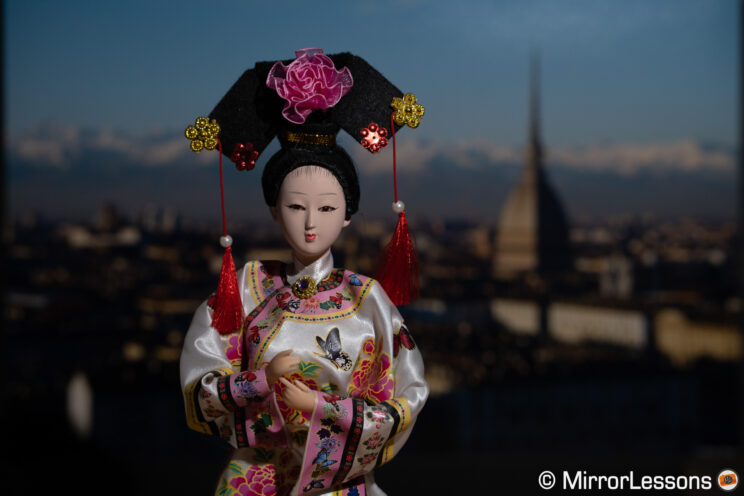
I’m showing the native 100% crop from the 61MP images, so obviously there is noise but I find the quality really good overall, if you think about how much resolution there is in the first place. And of course, you can downsize your image or use a noise reduction software, so really, noise is not a big concern with this camera in my opinion.
Sony A7R V Bird Eye AF and “AI” Autofocus
The autofocus is entirely new, not only because there are more phase detection points, but primarily thanks to the expanded subject detection and deep learning technology.
Sony has designed a dedicated processing unit for this, what they call the AI processing unit, added inside the A7R V solely for the purpose of better subject recognition. It uses detailed information about human forms and positions to track people more accurately, but it can also recognise a vaster range of animals and birds, as well as insects and various vehicles.
Concerning animals, Sony said there is an improvement of 40% in performance (in comparison to previous models), because this new AI technology can detect smaller animals, and it can also recognise heads and bodies, not just the eyes.
With static subjects, like birds in trees and branches, the performance is certainly impressive. Particularly, when the animal is positioned backwards, or with foreground elements in the way, the A7R V always understands there is a bird in the frame, and nails focus on it 99% of the time. You can get the odd image with the wrong focus distance, but it’s rare.
In the example below, the chaffinch is facing the other way initially, so the R model has focused on the head instead. When the bird turns around, the eye is perfectly sharp straight away. There was no hesitation, no confusion, right from the start.
It’s fair to say that this level of performance is not entirely new to me: I got very good results with other Sony cameras that have bird detection, such as the flagship A1 and the A7 IV, including when the bird was partially covered by branches or leaves. But the main advantage of the A7R V is that when the eye of the animal is not visible, because it is too far, in the shade, or facing the wrong way, the camera will concentrate on the head, or the body, rather than reverting to the normal tracking mode.
The A7R V understands there is an animal in the scene, no matter the conditions, and that means focus will stay on your subject more easily at all times. Another good example is when the bird is small in the frame, like in the example below. The camera was very accurate in keeping focus on the tiny pied wagtail, whereas with the normal tracking method, it would have probably lost it more easily, in favour of the grass and dirt in the foreground, or background.
Sony A7R V Settings for Bird Photography (Subject Detection)
For every subject detection type, including birds, the A7R V lets you fine tune the performance with three new settings: Tracking Shift Range, Tracking Persistence Level, and Recognition Sensitivity. Let’s see what they do.
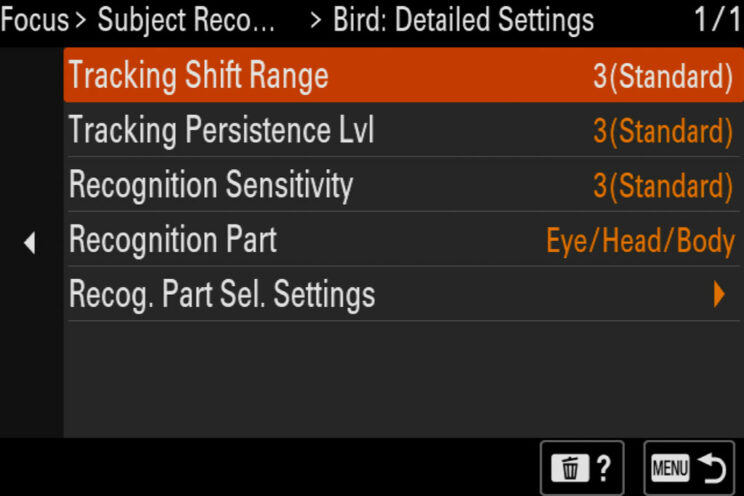
Tracking Shift Range is quite interesting: you’re basically telling the camera if it should track only the subjects that are inside the focus area, or if it should also count those that are outside the focus area, and how far outside.
The second new setting, Tracking Persistence Level, tells the A7R V what it should do if the subject you’re following is no longer visible (because it has become out of focus for example, or because it disappeared behind the trees). Should the camera keep searching in the same area, or should it track another subject in the foreground as soon as possible? (if there is one of course)
The third setting, Recognition Sensitivity, is the one I found to be the most useful. If you see that the camera is struggling to detect a subject, or recognises the body but not the eye, you can increase the sensitivity to 4 or 5. Reducing the level can avoid false recognition, if the camera confuses something else for an animal or bird.
I found this third setting useful for distant birds, particularly when they were flying. For the red kites that appear small inside the frame, the camera was not detecting them at first, using the default focus points instead, but after increasing the level to 5, it started to recognise the body, and that helped the camera minimise the chance of mis-focusing on the background.
Explaining exactly what these new settings do, with relevant examples, is not easy in a written article. You’ll understand better by watching my YouTube video review below, from minute 7.47, where I explain them more in-depth.
There is something important to understand: these three new settings are quite advanced, and one reason I’m saying this is because I didn’t get the same behaviour every time, especially with the second setting (Tracking Persistence Level). I think it can vary depending on the exact subject, action and situation. Additionally, other autofocus settings can have an impact on these news ones, like if you work with a larger or smaller focus area for example.
So my advice is this: don’t touch them right away, leave them as you found them with the factory settings (which should be level 3 / standard for all of them). If the camera is not focusing properly, or not recognising a subject, you can try to change these, and I would start with the first and the third one: leave the second setting for last.
Another new option in the menu: you can select animals and birds together as the subject to detect, if you know you’ll encounter different types of animal. You can give priority to one over the other, if necessary.
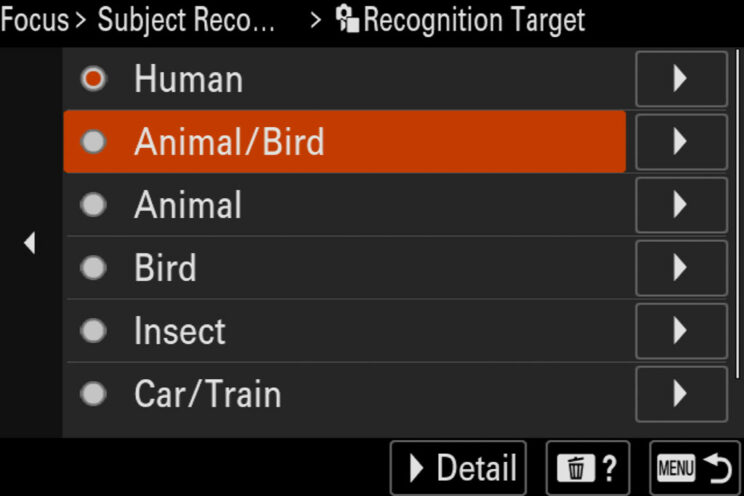
Finally, you can decide if the camera should recognise all the parts of the animal, or be limited to the head and eye only, or just the eye. Personally, I didn’t find any advantage in changing this, so I’ve left it to the full body/head/eye recognition.

Sony A7R V and Birds in Flight
If you were hoping to see a higher score with this new camera, that’s unfortunately not the case. Frankly speaking, the A7R V behaves mostly like its predecessor: fast in locking onto the subject, very good tracking capabilities, rarely mis-focuses on the background, but I also encounter limitations related to focus accuracy.
Let’s start with my AF score and as you can see below, the best result I got is a few points below the A7R IV, and definitely inferior to other Sony cameras like the A7 IV, or the older A9 mark II.
A1
98%
100%
A9 II
96%
99%
A7 IV
94%
100%
A7R IV
88%
100%
A7 III
86%
99%
A7R V
84%
97%
I tried a lot of different setting combinations, and this is the one that gave me the best score of 84%:
- Focus Area: Tracking with Zone
- Subject Recog. in AF: On
- Recognition Target: Bird
- Tracking Shift range: 1 (narrow)
- Tracking Persistence Lvl: 3 (standard)
- Recognition sensitivity: 5 (high)
- Recognition part: Eye/Head/Body
- Priority Setting in AF-C: Focus
- Aperture Drive in AF: Focus priority
- AF Track Sensitivity: 5 (Responsive)
- Drive Mode: Hi (8fps)
- Steadyshot: Off
Be aware that these same settings, on a second day of shooting, delivered a lower score of 78%, so there seems to be a problem with inconsistency as well.
Interestingly, switching subject detection off, and just relying on the normal tracking mode, delivered very similar performance. The only main difference is that without subject detection, the camera was a bit more prone to focus on the background, when the bird appeared small inside the frame.
Subject Recognition Off
82%
98%
Subject Recognition On
84%
97%
So why didn’t the A7R V get a better score? Well, a good number of photos were slightly off concerning focus. You get a shot that is perfectly sharp, like the one below on the left, where you can appreciate all the details on the animal, and then the next four images are slightly soft, the crisp details are gone. This happened even when the bird was against the blue sky, well framed on a sunny day. In fact, the A7R V had less issues with a busy background than with a clear background, which was surprising to notice.
For the record, the A7R V is not a bad camera for birds in flight, but I was expecting better performance than its predecessor. Perhaps it needs some tweaking at a software level, and maybe we’ll get more firmware updates in the future. Perhaps some of the new settings I described before are better designed for other type of subjects (people for example). Or maybe, this new autofocus system will work better with a camera that has a faster processing and calculation speed, like the A1, or a future A9 mark III.
The last point I want to make in this chapter is that the best AF performance for birds in flight came about after trying all sorts of combinations with the new settings, which means the A7R V is a much more complicated camera to configure than any of its predecessor when it comes to autofocus.
The A7 series has always been the easiest one to set up, because there were only two or three settings to worry about, and they were basic ones, like which focus area to use. Sony always had an autofocus that was smart enough to understand where the subject was, and rarely confused it with the background or something else. I’m talking even A7R mark III, A7 mark III, the old generation.
I would have thought that increasing the deep learning capabilities would have made the process easier, not the contrary. Don’t get me wrong, it’s great Sony added these settings, at least we can intervene and try to improve the performance, but I can’t help thinking that the A7R V complicates things more than it should.
Drive Speed
There isn’t a lot to say here: the A7R V has a maximum continuous shooting speed of 10fps, like its predecessor. The speed doesn’t change whether you use the mechanical shutter or the electronic shutter, but the sensor readout is not very fast on this camera, so I would definitely stick with the mechanical shutter.
One thing to know is that if you choose uncompressed, or lossless compressed RAW, the drive speed is slower. I timed it around 6.7fps, and that includes all the lossless RAW options: large, medium and small. To get the full speed of 10fps, you need to work with Compressed RAW or JPGs.
Buffer is pretty good if you use CFexpress cards, as you can see below: it never slows down whether it’s compressed RAW, lossless RAW or JPGs. With a SD card, the speed becomes slower after 10 seconds, if you shoot RAW.
Conclusion
Regarding bird photography (and wildlife in general), I think the main appeal of the A7R V remains the sensor and its 61 megapixels, just like its predecessor. It delivers fantastic image quality, as well as more versatility when you need to crop.
The new autofocus system is very interesting, and very promising. With static birds, particularly those surrounded by disturbing elements, as well as those at a distance, it is one of the best I’ve ever tested, and some of the new settings can make a substantial difference in these situations.
For birds in flight however, I didn’t find the boost in performance I was hoping to see. Trying to find the “magic” combinations with all the new settings became a challenging task, one that makes the A7R V a difficult camera to set up, if not even confusing at times, as the same configuration doesn’t always deliver the same results.
As I said further up, I wonder if we will see more firmware updates (version 2.0 was aimed at the new Creator app) but I’m also eager to test this new autofocus with a faster camera. The rumoured A9 III could be the perfect candidate.
Reminder: the links below are affiliate links. If you decided to buy something after clicking the link, we will receive a small commission.
Check price of the Sony A7R V on
B&H Photo

